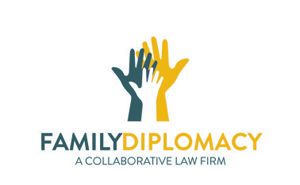Cordover Published in Lawyer Magazine on Simplified Collaborative Divorce Protocols
The Lawyer Magazine has published an article co-authored by collaborative attorneys Adam B. Cordover and Jeremy Gluckman on “A Simplifed Protocol for Collaborative Dissolution.” The article is on page 22 of the Summer 2015 edition of the Lawyer Magazine, which is published and distributed by the Hillsborough County Bar Association.
The article is reproduced below:
One objection that most professionals have heard regarding the collaborative process is that it is too expensive and complicated. Though there are many arguments against this objection, in some cases it is valid. If there are relatively few assets and debts and clients are in general agreement regarding their children, a simplified process may be in order.
What follows is a step-by-step guide to simplify the use of a full team in a collaborative dissolution. This process has been successfully tested in Tampa. It requires more preparation from the professionals and clients than other versions of the full team model; however, it can promote two important goals: (i) speed up the process and (ii) reduce costs to the clients.
Below are simplified protocols for our full team model:
(1) A party meets with a collaboratively trained lawyer where the pros and cons of all processes, including litigation, mediation, and collaborative divorce, are explained.
(2) The attorney provides the party with names of at least three other collaboratively trained lawyers (and perhaps access to membership lists of local collaborative practice groups), who then provides those names to his/her spouse along with materials about the collaborative process.
(3) Once both parties have retained counsel and the spouses have agreed in principle to use the collaborative process, the attorneys choose neutral professionals, and all discuss whether the simplified protocols may be appropriate.
(4) The parties then meet (separately or together) with the neutral mental health facilitator. The goal of that meeting is to flesh out interests (as opposed to positions), set out the parties’ goals in the dissolution, and if possible and applicable, sketch a preliminary outline of their preferred parenting plan.
(5) Next, the parties meet (separately or together) with the neutral financial professional. At that meeting, they discuss financial issues, determine which documents are needed, and create preliminary financial affidavits.
(6) The parties then meet separately with their respective attorneys to review the reports and documents distributed by the neutral professionals.Each attorney also reads the collaborative participation agreement out loud with his/her client and answers any questions, and the parties and attorneys sign the collaborative participation agreement.
(7) Before the first and only full team meeting, the attorneys work together to create shell agreements and other documents necessary for signing and filing. Supreme Court forms may be used to the extent possible.
(8) At the one full team meeting (which will be, at most, about 4 hours long), the remaining team members sign the participation agreement if they have not already done so, exchange necessary documents, complete and execute the financial affidavits, and finalize and sign the parenting plan and marital settlement agreement.
(9) The attorneys then file the necessary pleadings.
(10) All (including neutrals, if the clients wish) attend a final hearing for the entry of the final judgment.
The description of the simplified model here is itself in a simplified form. We hope that this will give you a costeffective plan for uncomplicated cases.
If you have questions about how the collaborative divorce process, simplified or otherwise, can help your family, schedule a consultation with Family Diplomacy at (813) 443-0615 or fill out our contact form.




Leave a Reply
Want to join the discussion?Feel free to contribute!